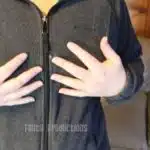Down coats and vests are popular winter wear that provide excellent warmth and comfort. However, they require careful maintenance to ensure longevity, as well as to retain their insulating properties. Cleaning a down coat or vest can be a daunting task, especially if you are unsure how to go about it. This article will provide you with step-by-step instructions on how to clean and care for your down coat or vest, so that you can enjoy the benefits of this winter wear for years to come.
As a professional cleaning consultant, I understand the importance of proper cleaning techniques for various types of clothing. Down coats and vests are unique in their construction and require special attention when it comes to cleaning. Failure to clean them properly can lead to damage, loss of insulation, and ultimately reduced performance. In this article, I will share with you my expertise on how to effectively clean your down coat or vest without damaging its delicate fibers and feathers. Whether you are an outdoor enthusiast or simply looking for ways to extend the life of your favorite winter gear, following these simple steps will help keep your down coat or vest in top condition.
Understanding Down Material
Down coats and vests are popular among outdoor enthusiasts and fashion lovers for their warmth, durability, and lightweight. Understanding the quality of down material is crucial in maintaining the longevity of these items. The fill power of down refers to its ability to expand and trap air, which translates to greater insulation. Higher fill power means that it takes less down to achieve warmth, resulting in a lighter garment with more loft. In contrast, lower fill power means that more down is required to achieve the same level of insulation.
Identifying quality down material also involves examining its origin. Ethically sourced down is obtained from live birds during molting season or after they have been humanely euthanized for other purposes like meat consumption. It is important to avoid purchasing products that use down obtained from force-fed or live-plucked birds as this practice is cruel and inhumane.
When choosing a down coat or vest, it is essential to consider both the fill power and the origin of the material used. Higher quality down may come at a higher cost but will provide better insulation and last longer than lower quality alternatives. By understanding these factors, you can make an informed decision when purchasing your next down garment and take steps towards prolonging its lifespan through proper cleaning techniques.
Understanding the characteristics of high-quality down material sets the foundation for properly cleaning your coat or vest. The next step involves preparing your item for cleaning by following pre-cleaning preparation steps such as checking for tears or stains before washing.
Pre-Cleaning Preparation
- Before cleaning a down coat or vest, it is important to spot test a small, hidden area of the item to ensure that the cleaner and method of cleaning selected is appropriate and will not cause damage.
- Additionally, it is important to shake off any dirt, dust, and debris that may have accumulated on the down coat or vest to avoid any further damage to the material during the cleaning process.
- It is also important to check the pockets and turn the pockets inside out to remove any items that may have been left inside.
- After spot testing, shaking off dirt, and checking pockets, the down coat or vest can then be safely and effectively cleaned.
- To ensure that the down coat or vest is not damaged, it is important to use a gentle cleaner and a gentle cleaning method.
- If any stains remain, it may be necessary to use a more aggressive cleaner and cleaning method to ensure that the down coat or vest is effectively cleaned.
Spot Test
Spot testing is a crucial step in the pre-cleaning preparation of down coats or vests. It is essential to determine whether the cleaning solution you intend to use will damage the fabric or color of your garment. Ignoring spot testing can result in a ruined item, which is an unnecessary expense and waste of time. Hence, it is recommended to carry out this simple test before embarking on cleaning your down coat or vest.
To perform a spot test, apply a small amount of the cleaning solution on an inconspicuous part of your coat or vest, such as inside seam allowance. Observe for any changes in color, texture, or fading. If there is no adverse effect after waiting for 24 hours, proceed to clean your entire garment. However, if you notice any discoloration or damage during this process, then it’s best to avoid using that particular cleaning solution. Instead, try using a different cleaner that is safe for your garment.
Effective spot cleaning requires choosing the right cleaner and following the correct procedure. When dealing with stubborn stains, it’s best to use mild detergents and avoid harsh chemicals that may damage your down coat or vest’s fabric or fill power. Always start by dabbing the stain with a clean cloth before applying any cleaning solution and avoid rubbing vigorously as that may cause pilling or matting of the down fibers. With these tips in mind, you can confidently perform spot tests and remove pesky stains without compromising your valuable garment’s integrity and quality.
Shake Off Dirt
As a professional cleaning consultant, one of the essential aspects of pre-cleaning preparation for down coats or vests is to shake off dirt and debris before proceeding with any cleaning solution. Brushing off debris from the surface can be done using a soft-bristled brush, taking care not to damage the delicate fabric or fill power. This step is vital as it helps in removing any loose dirt that may have accumulated on your garment, making the next cleaning step more manageable.
Another effective method for removing dirt and debris from your down coat or vest is by vacuuming feathers. This technique involves using a handheld vacuum cleaner with a soft brush attachment to gently remove any particles that may be clinging to the feathers. It’s important to note that you should avoid applying excessive pressure when vacuuming, as this can cause the down fibers to compress, reducing their insulating properties.
By incorporating these simple steps into your pre-cleaning preparation routine, you can ensure that your down coat or vest remains in top condition for longer. Shake off dirt and debris regularly to prevent them from becoming embedded deep within the fibers of your garment. With proper care and maintenance, your valuable investment will continue to provide warmth and comfort for many years to come.
Check Pockets
In addition to shaking off dirt and debris and vacuuming feathers, another crucial step in pre-cleaning preparation for down coats or vests is emptying pockets. Before washing your garment, be sure to check all pockets thoroughly, removing any items or debris that may have accumulated inside. This is an important step as items left in the pockets can cause damage to the fabric or fill power during the washing process. It’s also essential to avoid leaving any loose items in your pockets as they can contribute to shrinkage of the fabric.
To avoid shrinkage during the cleaning process, it’s important to pay close attention to the care label instructions on your garment. Some down coats or vests require special detergents or specific washing conditions, such as handwashing or dry cleaning. Following these instructions will help ensure that your garment maintains its shape and insulation properties.
Lastly, after emptying pockets and ensuring proper washing procedures are followed, hang your down coat or vest out to dry naturally. Never wring out excess water from your garment as this can damage the delicate fibers of the fill power. Instead, gently squeeze out any excess water and lay it flat on a clean towel before hanging it up to dry in a well-ventilated area. Properly caring for your down coat or vest through appropriate pre-cleaning preparation will ensure that it remains in top condition for years to come.
Choosing The Right Detergent
When it comes to cleaning down coats and vests, choosing the right detergent is crucial. The wrong detergent can damage the delicate feathers, leaving your coat or vest looking flat and lifeless. It’s important to choose a detergent that is gentle enough for the material while still effectively removing dirt and grime.
One option is to choose eco-friendly detergents, which are better for the environment and often gentler on fabrics. Look for detergents labeled as “biodegradable” or “plant-based.” These options are typically free from harsh chemicals and synthetic fragrances that can irritate skin and damage clothing.
Before using any detergent on your down coat or vest, it’s essential to test it on a small area first. Apply a small amount of detergent on an inconspicuous spot and wait at least 24 hours before washing the entire garment. This will allow you to see if there are any adverse effects such as discoloration or damage to the fabric.
By choosing eco-friendly detergents and testing them before use, you can ensure that your down coat or vest stays in top condition for years to come. In the next section, we’ll discuss how to avoid harsh chemicals when cleaning your outerwear.
Avoiding Harsh Chemicals
After choosing the right detergent, it is important to avoid using harsh chemicals when cleaning your down coat or vest. Eco-friendly alternatives and natural cleaning solutions can be just as effective without compromising the quality of your garment. These options are not only better for the environment but also for your health.
One eco-friendly alternative is vinegar. Adding a cup of white vinegar to the rinse cycle can help remove any leftover soap residue and restore the natural loft of the down. Another option is baking soda, which can be used in place of detergent by mixing it with water to create a paste and applying it directly onto stains before washing. For those who prefer a more fragrant solution, essential oils such as lavender or tea tree oil can also be added to the wash.
It is important to note that when using natural cleaning solutions, it may take longer for stains to come out compared to traditional detergents. However, this trade-off is worth it for those who prioritize eco-friendliness and non-toxicity in their cleaning routine. By incorporating these alternatives into your cleaning process, you can ensure that your down coat or vest remains clean and well-maintained while also protecting yourself and the environment.
When washing your down coat or vest, there are specific instructions that should be followed to prevent damage or loss of insulation. In the next section, we will discuss these guidelines in detail to ensure that you can effectively clean your garment without compromising its quality.
Washing Your Down Coat Or Vest
- When washing your down coat or vest, the right detergent is important to ensure safe cleaning and to protect the down’s insulating properties.
- It is best to use a detergent specifically designed for delicate fabrics and down items, such as a special down detergent or a mild, all-purpose soap.
- Handwashing is often the best method for cleaning down items, as gentler agitation and a lower temperature can help preserve the down and its loft.
- If machine washing, use a gentle cycle, cold water, and a slower spin cycle.
- After washing, it is important to dry the down items completely.
- Drying should be done in a low-heat dryer or on a line outside, and the items should be tumbled frequently to help prevent clumping and ensure even drying.
Detergents
When it comes to washing your down coat or vest, choosing the right detergent can make all the difference. As a professional cleaning consultant, I recommend using eco-friendly and fragrance-free detergents for the best results. These detergents are gentle on both your garment and the environment, ensuring that you can enjoy a clean coat without any harmful chemicals.
Before washing your down coat or vest, it’s important to spot clean any stains or marks. Use a damp cloth with mild soap to gently remove any dirt or grime from the affected area. This will prevent any further damage during the washing process and ensure that your coat comes out looking as good as new.
When choosing a detergent for your down coat or vest, keep in mind that regular laundry detergents can strip away the natural oils in down feathers, reducing their insulating properties. Instead, opt for a specialized detergent designed specifically for down garments. By following these simple steps and taking care when selecting your detergent, you can keep your down coat or vest looking great for years to come.
Washing Techniques
Proper washing techniques are crucial in maintaining the quality and longevity of your down coat or vest. While hand washing is generally recommended, dry cleaning can also be a viable option for those who don’t have the time or resources to hand wash their garment. However, it’s important to note that not all dry cleaners are equipped to handle down garments, so be sure to choose a reputable cleaner with experience in handling delicate fabrics.
If you opt for hand washing your down coat or vest, be sure to fill a clean sink or bathtub with lukewarm water and add a specialized detergent designed for down garments. Gently submerge your garment in the water and agitate it by hand, being careful not to scrub too hard or wring out the feathers. Rinse thoroughly with clean water and gently press out any excess water before laying it flat on a towel to air dry.
Regardless of which washing technique you choose, always read the care label on your garment beforehand and follow any specific instructions provided by the manufacturer. With proper care and attention, your down coat or vest can continue to provide warmth and comfort for years to come.
Drying
After washing your down coat or vest, the next step is to dry it properly. While using a dryer might seem like a convenient option, it’s important to note that down garments should never be tumble dried. High heat can damage the delicate feathers and cause them to clump together, reducing their insulating properties. Instead, air drying is the best method for drying down garments.
To air dry your down coat or vest, gently press out any excess water after washing and lay it flat on a clean towel. Avoid hanging your garment as this can cause the feathers to shift and become unevenly distributed. Place the towel with your garment on a flat surface in a well-ventilated room away from direct sunlight or heat sources. Allow your garment to dry naturally over time, flipping it over occasionally to ensure both sides are evenly dried.
If you’re in a hurry and need to speed up the drying process, you can use a low heat setting on a hair dryer or fan set at room temperature. However, be sure to hold the device at least six inches away from the garment and move it around continuously to prevent concentrated heat from damaging any part of the fabric or feathers. With these techniques in mind, proper drying will help maintain the quality and insulation of your down coat or vest for years to come.
Drying Your Down Garment
After washing your down garment, it is important to properly dry it to maintain its quality and functionality. Air drying is the preferred method for drying down garments as it allows the feathers inside to spread out and regain their loft. To air dry your garment, lay it flat on a clean towel or hang it up in a well-ventilated area. Avoid direct sunlight as this can cause color fading and damage to the fabric.
If you need your down garment to be dried quickly, tumble drying on low heat can be an option. However, this should only be done if necessary as excessive heat can cause damage to the feathers inside. Place a few clean tennis balls or dryer balls in the dryer with your down garment to help fluff up the feathers during the drying process. Check the garment every 15 minutes and remove it from the dryer as soon as it is completely dry.
Properly drying your down garment is crucial in maintaining its quality and performance. In the next section, we will discuss how to avoid heat damage when drying your garment, which can lead to reduced insulation properties and overall lifespan of your beloved gear.
Avoiding Heat Damage
Understanding insulation is crucial to avoid heat damage during the cleaning process of your down coat or vest. Down insulation is made of goose or duck feathers that have a natural ability to trap air and provide warmth. The down feathers are delicate and can lose their insulating properties if exposed to high heat, causing permanent damage to the coat or vest’s filling.
Preventing wear and tear on your down coat or vest is essential in maintaining its insulation properties. Avoid using fabric softeners when washing as it can cause the down filling to clump, reducing its insulating abilities. Additionally, refrain from using bleach or harsh detergents as these can break down the natural oils present in the feathers, leading to wear and tear.
It is important to remember that proper care for your down coat or vest will prolong its lifespan and maintain its insulating properties. By understanding insulation and preventing wear and tear, you can ensure that your garment stays warm and comfortable for years. In the next section, we will cover the importance of fluffing your down fill after washing to restore its loftiness and maintain optimal performance.
Fluffing Your Down Fill
After washing your down coat or vest, it is essential to restore its loft by fluffing the down fill. Fluffing techniques involve manually shaking and fluffing the garment until the down is evenly distributed. By doing so, you can maintain the insulating properties of your down garment and ensure that it keeps you warm during the winter season.
Importance of fluffing cannot be overstated as this process helps to break up any clumps of down that may have formed during washing. Clumps can affect the insulation of your coat or vest, resulting in cold spots. Fluffing also helps to redistribute the feathers inside the baffles or compartments, ensuring that they are evenly spread out.
To effectively fluff your down fill, follow these four tips:
- Use a clean tennis ball to bounce around in the dryer with your garment
- Use a low heat setting when drying
- Take breaks to manually shake and fluff the garment
- Ensure that your coat or vest is completely dry before storing it away for future use.
By following these tips and techniques, you can prolong the lifespan of your down coat or vest while maintaining its warmth and insulating properties. The final step in caring for your down garment is proper storage, which we will cover in our subsequent section about storing your down garment.
Storing Your Down Garment
A down garment is a significant investment that requires proper care to retain its warmth and shape. After cleaning your coat or vest, it’s time to store it correctly for long term care. The right storage will prevent any damage or loss of insulation in the down material.
Storing tips for your down garment include folding instead of hanging it, as hanging can cause deformities and stress on the fabric and seams. Store your down garment in a breathable bag or container to protect it from dust, moisture, and insects. Avoid storing your coat or vest near direct sunlight or heat sources as this can break down the natural fibers in the down material.
Proper long-term care of your down garment ensures that you get maximum use out of it for years to come. Regularly fluffing up the jacket by shaking it out will help maintain its insulating properties and prevent clumping of the feathers. Additionally, airing out your coat or vest occasionally will help eliminate unwanted odors and keep it fresh for future use.
As you prepare to remove stains from your down garment, consider using gentle methods that won’t damage the delicate fabric. A mild soap solution can be used to spot clean small stains, while larger stains may require professional cleaning services. Remember always to follow manufacturer’s instructions when removing stains from your down coat or vest to avoid causing further damage.
Removing Stains
Removing stains from a down coat or vest can be a challenging task, particularly when dealing with stubborn stains. Stains may appear on your down coat or vest due to accidental spills, food stains, or even sweat stains. To remove these stubborn stains, it is essential to act quickly and use the right cleaning techniques. First, identify the type of stain you are dealing with, and then select an appropriate cleaning solution.
When removing stubborn stains from delicate fabrics like down coats or vests, it is important to use gentle cleaning methods. Always avoid using harsh chemicals that may damage the fabric and affect the insulation properties of your garment. Instead, opt for natural cleaning solutions like white vinegar or baking soda mixed with water. These natural cleaners can effectively break down stubborn stains without damaging the delicate fabric.
In conclusion, removing stains from a down coat or vest requires patience and careful attention to detail. Always check the care label instructions before attempting any cleaning method to avoid damaging your garment. By using gentle cleaning solutions and taking immediate action when a stain occurs, you can effectively remove stubborn stains from your down coat or vest without causing any harm to the fabric. Next, we will discuss how to deal with mildew on your down coat or vest.
Dealing With Mildew
Mildew is a common issue that arises when down garments are not stored or washed properly. According to recent studies, mildew can start to grow on damp clothing within 24-48 hours, posing health risks and damaging the garment’s integrity. It is important to prevent mildew growth in down coats and vests by following proper care instructions.
Preventing mildew requires a few simple steps. Firstly, ensure that the garment is completely dry before storing it away. Secondly, store your down coat or vest in a cool and dry place with good air circulation. Lastly, avoid packing the garment too tightly in storage as this can trap moisture and lead to mildew growth. By taking these preventative measures, you can avoid dealing with mildew stains altogether.
However, if you do find mildew stains on your down coat or vest, there are ways to deal with it effectively. Start by brushing off any visible mold spores with a soft-bristled brush outdoors to prevent spreading the spores indoors. Then wash the garment following the care instructions and use an anti-fungal laundry additive specifically designed for removing mildew stains. If the stain persists after washing, repeat the process until it disappears completely.
Moving forward with proper prevention techniques will undoubtedly save time and money in dealing with costly repairs caused by neglecting preventative measures of protecting your investments from damage caused by natural elements such as moisture which leads to mold growth. The next step will cover patching tears or holes in order to further extend your investment’s lifespan while keeping you warm during colder seasons or outdoor excursions!
Patching Tears Or Holes
When dealing with tears or holes in a down coat or vest, it is important to address the issue promptly. Ignoring such damage can result in further tearing and even render the item unusable. Fortunately, there are patching techniques available to repair these types of damages.
One approach to patching down jackets and vests is to use a DIY repair kit. These kits usually include patches that you can attach to the damaged area using an adhesive. Some kits also come with a special heat-activated patch that bonds directly onto the fabric. When using these kits, be sure to follow the instructions carefully and test on a small area first.
Another method for repairing small tears or holes in down garments is hand stitching. This technique involves sewing up the tear using a needle and thread, being careful not to pull too tightly and create more damage. If possible, try to match the color of your thread to that of your jacket or vest for a seamless appearance.
In situations where the tear is large or extensive, seeking professional cleaning services may be necessary. Professional cleaners have access to specialized equipment and materials that can effectively repair damages without compromising the integrity of your garment. However, if you choose this route, be sure to research reputable cleaners who specialize in working with delicate fabrics like down.
Seeking Professional Cleaning
So, you’ve tried cleaning your down coat yourself but it’s just not working out. The feathers are clumping together and the coat looks worse than before. Well, fear not! There are alternatives to cleaning your down garment at home. Seeking professional cleaning services can save you time and give you peace of mind that your beloved coat is in good hands.
There are many companies that specialize in cleaning down garments. They have the expertise and equipment to properly clean and restore your coat or vest to its former glory. Although the cost of professional cleaning may be higher than DIY methods, it’s important to consider the value of preserving your investment.
When comparing costs between different companies, be sure to ask about their specific cleaning process and any additional fees for repairs or alterations. It’s also worth checking if they offer any warranties or guarantees for their services. Finding a reputable company with a track record of quality service can make all the difference in ensuring your down garment lasts for years to come.
To maintain the longevity of your freshly cleaned down garment, there are certain precautions you should take. Avoid storing it in damp areas or direct sunlight, as this can damage the feathers and outer shell. Instead, store it in a dry, cool area with sufficient ventilation. Regularly fluffing up the feathers by shaking or gently patting the coat can help maintain its loft and insulation properties over time. By taking these simple steps, you can ensure that your down coat or vest will continue to provide warmth and comfort for many winters to come.
Maintaining Your Down Garment
After cleaning your down coat or vest, it is important to store it properly to maintain its quality. Keeping it in a cool, dry place with enough room for air circulation is essential to prevent mold and mildew growth. Avoid compressing the garment for extended periods as this can damage the feathers and affect insulation.
Odor removal is also crucial to maintaining the freshness of your down garment. One way to do this is by using activated charcoal bags or sachets placed inside the storage area. These can absorb any lingering odors and keep your coat or vest smelling clean and fresh.
Proper storage and odor removal are key factors in maintaining the longevity of your down garment. Follow these tips to ensure that your investment stays in top condition for many winters to come.
Next, we will discuss how to enjoy your clean and fresh down coat or vest without worrying about damaging it during everyday use.
Conclusion: Enjoying Your Clean And Fresh Down Coat Or Vest
After the thorough cleaning of your down coat or vest, it is essential to take proper care of it to enjoy outdoor activities while keeping warm. Hanging it up in a well-ventilated and dry area is necessary to avoid any mildew or mold growth that may damage the garment. Additionally, ensure that it is completely dry before storing it away to prevent the accumulation of moisture.
It is advisable not to compress your down-filled garment during storage for longevity. You can store it in a spacious breathable bag or hang it on a hanger with enough room for air circulation. Avoid folding or storing it in a cramped space as this could lead to damaging its insulating properties.
In summary, proper maintenance of your down coat or vest will guarantee longevity and maintain its warmth. It will also provide the chance to enjoy several outdoor activities without any fear of catching a cold. Therefore, ensure you follow the cleaning and storage guidelines provided by the manufacturer for maximum satisfaction.
Conclusion
Understanding the intricacies of down material is crucial when it comes to maintaining your down coat or vest. Before cleaning, ensure that all zippers and pockets are closed, and remove any detachable hoods or fur trims. Use a mild detergent specifically formulated for down materials to avoid damaging the garment.
Harsh chemicals should be avoided as they can strip away the natural oils in the down feathers, rendering them less efficient at trapping body heat. After washing, gently squeeze out any excess water and hang dry in a well-ventilated area. Avoid using a dryer as this can cause clumping and uneven loft.
Patching tears or holes in your garment is essential to prevent further damage and maintain insulation integrity. Professional cleaning services are also available for those who prefer to leave it to the experts. With proper maintenance, your clean and fresh down coat or vest will keep you warm and stylish for years to come. Remember, taking care of your down garment is an investment in yourself!
Image Credits
- “Down Coat (Explored)” by Pittsburgh Cam Miller (featured)





























